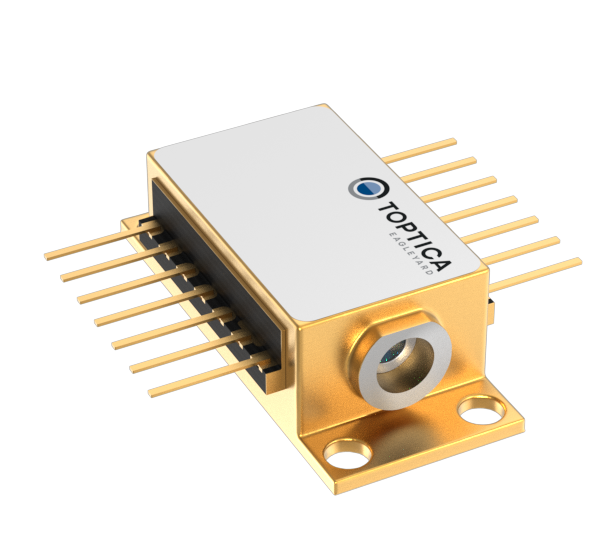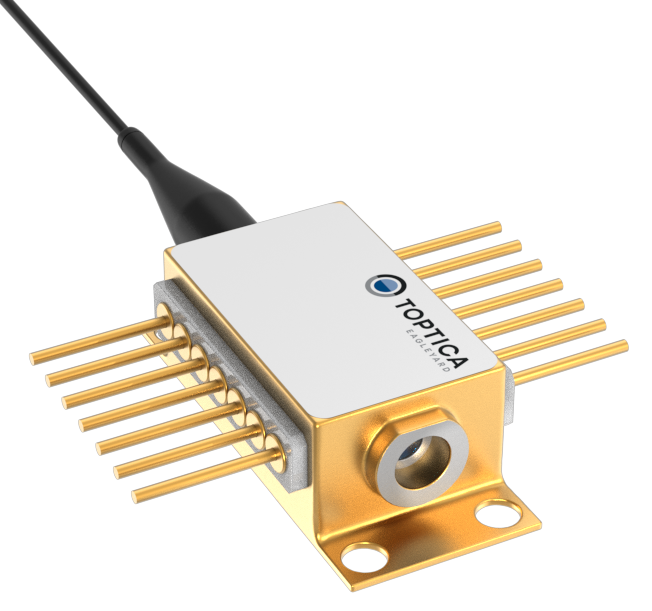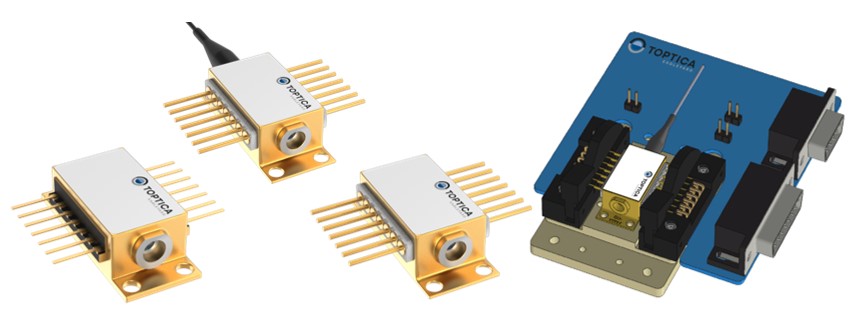More Wavelengths, Package Update & Evaluation Board
The two core products, miniTA and miniECL, which were successfully launched last year, will be available in additional wavelengths as of February. Both highly integrated laser diodes are available in butterfly packages — due to this robustness they are true game changers in the end application.
The miniECL, as a single frequency laser diode, has a very narrow linewidth of typically only 100 kHz, which enables its use in spectroscopy, quantum technology, metrology and atomic clocks. The integrated cavity allows for stable performance. The laser diode is available in the standard 80 mW in 770 nm (K D1 line), 780 nm (Rb D2 line), 852 nm (Cs D2 line) and 895 nm (Cs D1 line). Wavelengths in the range of 650–1100 nm can also be custom made.
As a tapered amplifier, the miniTA has a fiber-coupled input and collimated output beam and is available in an optimized butterfly package with 14 thicker pins starting in February. This hermetically sealed housing is particularly advantageous in industrial applications, as the thicker pins guarantee an ideal supply of power. Furthermore, the forming of the beam, as well as thermal management, are also integrated. Users can enjoy the easy plug-and-play aspect of the fiber plug of the seed laser. The miniTA is available in the following configurations starting in February 2023: 1.5 W @ 765 nm (covers 767 and 770 nm), 3 W @ 780 nm, 2 W @ 795 nm, 2 W @ 852 nm. An Evaluation Board will be available for the product starting in February, making commissioning even easier and testing faster.


The new Evaluation Board is also available for the µMOPA, a recent innovation that was nominated for the SPIE Prism Award. For the first time ever, a DBR laser has been monolithically integrated on to the same chip as the tapered amplifier. It has the same application advantages as the miniTA because of its hermetically sealed new butterfly housing that has 14 thicker pins. Since the launch of the product, users from the fields of interferometry and Raman spectroscopy in particular have appreciated the narrow linewidth of typically 3 pm, as well as integrated beam formation and thermal management. The µMOPA is available in the configuration of 2 W @ 1064 nm.
Read the whole press release here.


